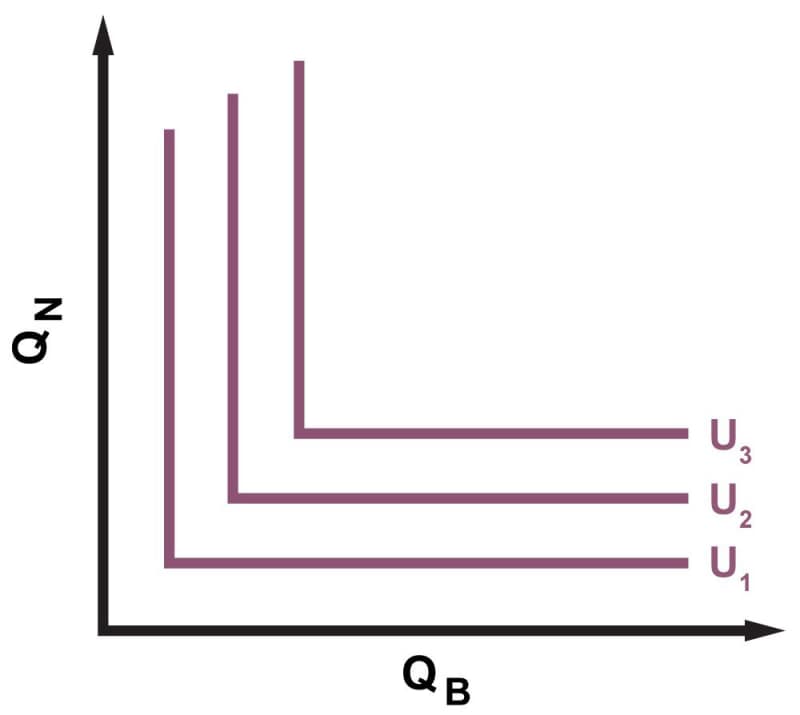Sometimes, the shape of a set of indifference curves reveals a special relationship between the two goods (or services) on the axes.
Complementary goods
When two goods are complements, they tend to be used together. Nuts and bolts are a good example: whenever you use a bolt, it is almost a sure bet you'll be using a nut, as well. Moreover, having extra bolts, with no matching nuts, isn't likely to increase your utility at all. There is virtually no difference in your happiness whether you have 10 nuts and 10 bolts, or 10 nuts and 20 bolts, or 20 nuts and 10 bolts. All your happiness comes from the 10 nut/bolt pairs you’re able to assemble. This shows up in the indifference curves below, where only a simultaneous increase of nuts and bolts will result in increased utility.
Substitute goods
What if the two goods being evaluated are pretty much interchangeable? Such goods are called substitutes. One example of perfect substitutes (though some might argue otherwise) could be Coke and Pepsi. If your attitude is that a cola is a cola, then you don't mind which one you get. More is still better, but if a server brings you a Coke refill when you started out drinking Pepsi, you don’t care. All you care about is the total amount. This eliminates the usual inward bend of the indifference curves, resulting in indifference curves like this:

Relation to shifts in demand
When two goods are complements or substitutes, a rise in the price of one can cause a shift in the demand for the other. Suppose, for example, that there is a disruption of the supply chain for nuts, shifting that supply curve inward. The shift in equilibrium will cause a rise in the price of nuts and a decrease in the quantity demanded (through movement up the demand curve). Because nuts and bolts are complementary, the demand curve for bolts will shift inward to similarly reduce the quantity demanded of bolts. The price of bolts will fall (through movement down the supply curve).
Now suppose there’s a disruption in the supply chain for Coke, shifting that supply curve inward. Again there is a rise in price and a decrease in quantity demanded (through movement up the demand curve). But because Pepsi is a complement to Coke, not a supplement, the demand for Pepsi will shift outward. Both the price and the quantity demanded of Pepsi will rise (through movement up the supply curve).
The simple bottom line is that when supply and demand curves shift, prices of substitutes tend to move up and down together, while prices of complements tend to move in opposite directions.














